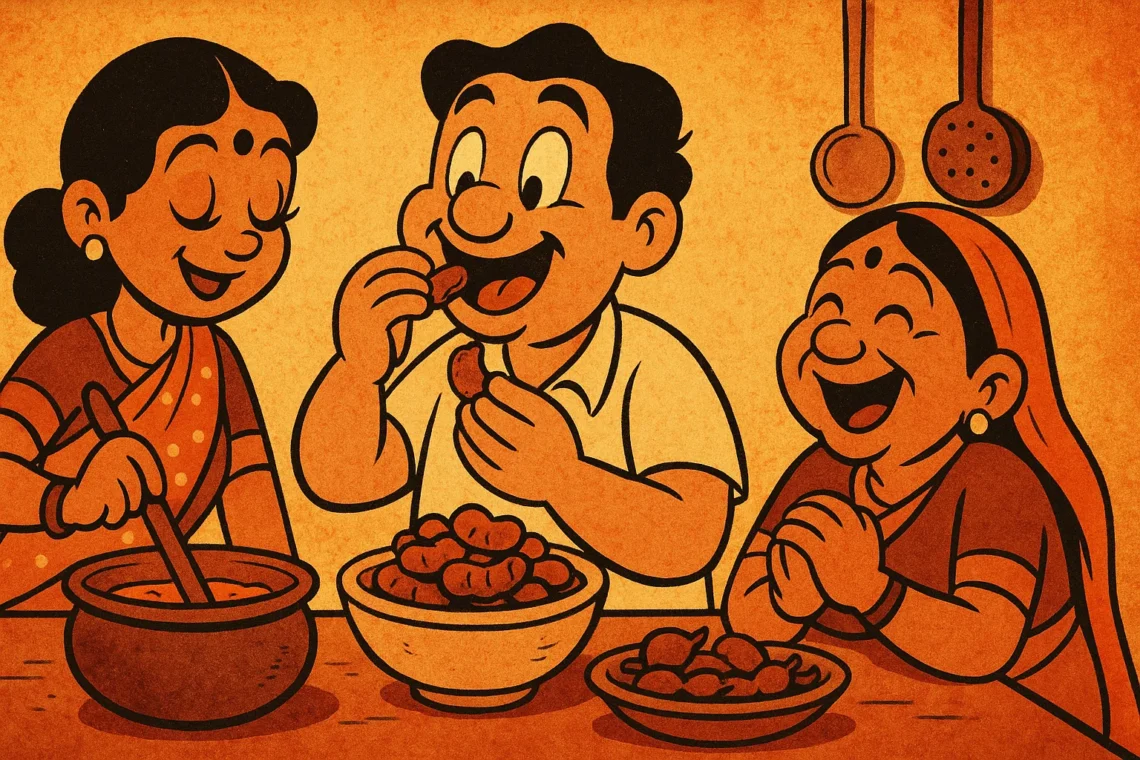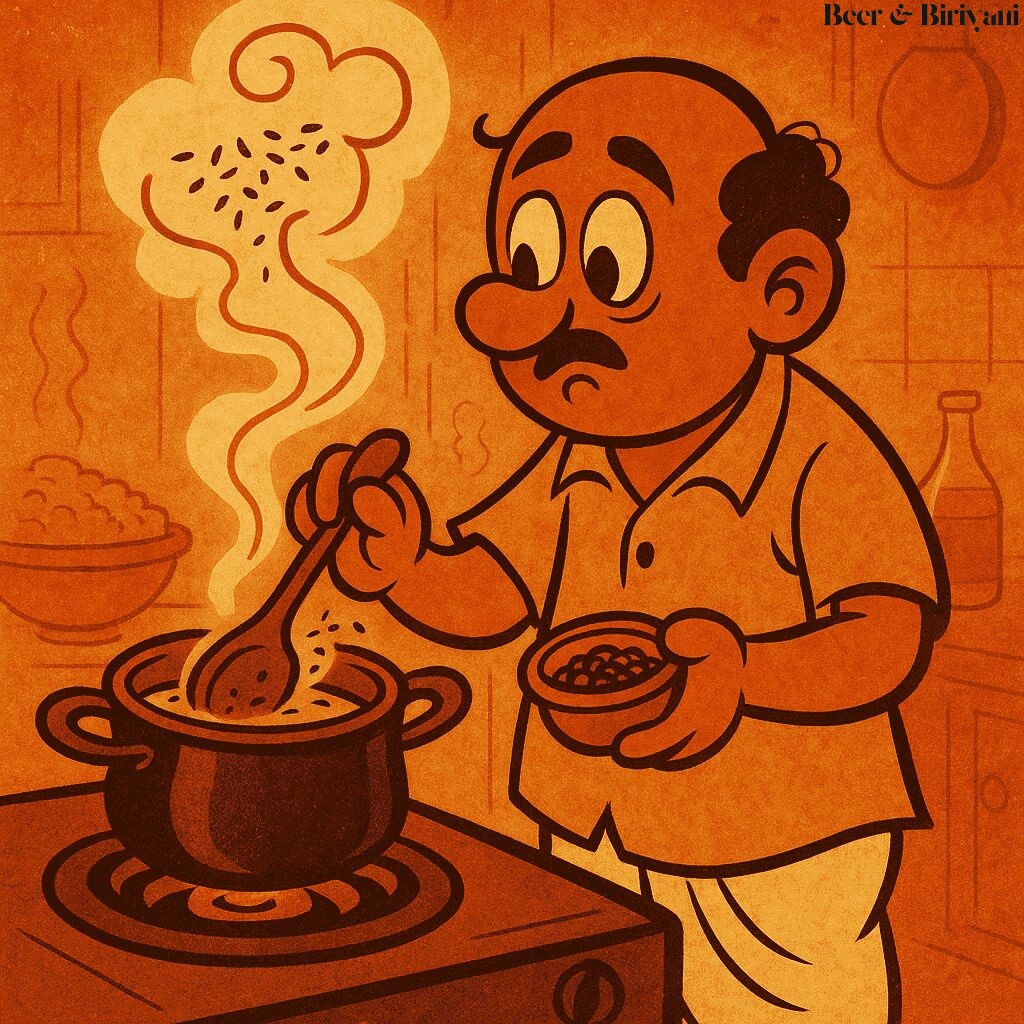It doesn’t scream. It doesn’t burn. It doesn’t numb your tongue or turn your hands yellow. But give tamarind just a little room to breathe—soak it, warm it, coax it—and suddenly, the entire dish bends in a new direction. Sweet becomes sharper. Spice becomes deeper. Salt becomes silkier. That’s tamarind for you. The quietest spice in the kitchen with the most dramatic effect. It doesn’t take over. It doesn’t shout. It just leans in and changes everything.
Growing up, I didn’t pay tamarind much attention. It lived in a sticky ball, wrapped in plastic, buried deep in the kitchen shelf behind the more obvious players—mirchi, jeera, haldi. It didn’t smell particularly appetizing. It was brown, fibrous, vaguely alien. But when my mom added it to rasam or sambhar or chutney, something shifted. The taste moved. The food suddenly had mood. Emotion. A twist.
The Understudy That Steals the Scene
Tamarind is rarely the star. You don’t serve a bowl of plain tamarind and expect applause. But use it in pani puri water? That’s the zing. Mix it into imli chutney? That’s the soul. Stir it into a dal? That’s the sigh at the end of a long day. Tamarind works like a plot twist—it’s not there to dominate. It’s there to complicate. In the best way possible.
Every Indian region has its own relationship with it. In the South, tamarind is foundational—sambhar, rasam, puliyogare, tamarind rice that glows with oil and tang. In the North, it’s the secret behind chaats—the thing that makes your mouth water before you’ve even taken a bite. In the East, it adds depth to fish curries. In the West, it sneaks into sweet-sour pickles and wet, sticky gravies. It shapeshifts—concentrate, paste, pulp, dried powder. Always ready. Always slightly misunderstood.
One Ingredient, Many Moods
There’s a kind of theatre in working with tamarind. You don’t just “add” it. You prepare it. You soak it, squeeze it, extract the pulp. Your fingers get stained. You taste it and wince. Then you taste it again. And again. Until it’s just right—sour, but not cruel. Tangy, but not thin. Deep, like a minor chord in a happy song.
In my house, my mom had this sixth sense for tamarind balance. She’d dip a finger into the rasam and pause. “Needs a little more imli,” she’d say, like a film director making an edit. And she was always right. Too little, and the dish was flat. Too much, and the sourness took over. But just the right amount? The whole thing sang.
The Tang That Tells a Story
What I love most about tamarind is its patience. You can forget it for most of the cooking process. But it waits. It waits for the right moment to be stirred in, usually last. And then it wakes everything up. Like a line of poetry added to a letter. Like a single chord that makes the whole melody fall into place.
It’s also deeply nostalgic. The taste of tamarind takes me back to street carts and summer heat, to imli goli candies wrapped in crinkly paper, to stealing tiny bites of raw tamarind from a tree in a cousin’s backyard and puckering so hard we cried. It’s the flavour of mischief, of childhood, of things a little too sharp but impossible to resist.
Tamarind in Exile
Now in Austin, I still keep a jar of tamarind concentrate in the fridge. Not the most traditional, but good enough for quick rasam, tamarind peanut chutney, or a surprise sambhar on a rainy day. I buy the pulp too, the sticky block that needs soaking and sieving, for when I want to cook like my mom—properly, messily, soulfully. And every time I taste it, I smile. Because even halfway across the world, tamarind still has the same effect: surprise, delight, depth. And a little drama.
Because tamarind doesn’t announce itself. It reveals itself. Slowly. Subtly. And then, completely. That’s not just flavor. That’s poetry.
Born in Mumbai, now stir-frying feelings in Texas. Writes about food, memory, and the messy magic in between — mostly to stay hungry, sometimes just to stay sane.












